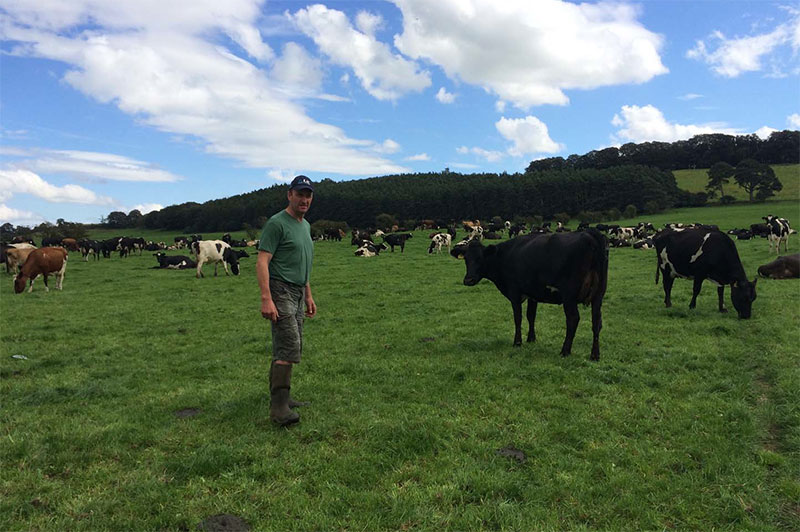
A seed mixture designed to maximise the grazing period for cows has contributed to an increase in profitability for Andrew and Margaret Smith, who farm 630 acres of land at Castlestead Estates in North Cumbria, allowing earlier turnout and more days in milk from grass.
The Smiths have been trialling BarForage Dairy Grazer – a new specialist mixture from Barenbrug, a leading grass seed producer – since March 2012 to support their New Zealand-style approach to dairy farming.
Milking 420 cows at Cotehill Farm, near Brampton in North Cumbria, the Smiths have a grazing target of 300 days per year. Turnout is targeted for the 20th February with the cows remaining on grass until late November / early December. To ensure a good supply of lush spring grass that persists throughout the year, the Smiths have been using BarForage Dairy Grazer – a mixture of 35% DUNLUCE and 65% TYRELLA.
The ley has been developed from the market-leading performance of both varieties on the Teagasc Pasture Profit Index (PPI), which ranks grass varieties according to their value in the Moorepark Dairy Systems Model – a pasture-based system of milk production.
For the Smiths, spring grazing starts on a 40-day rotation quickly reverting to a 21 day rotation once growth equals demand. This system is stretched to 25 to 30 days in periods when drought limits growth or later in the season when growth slows. Grazing starts at a cover of around 2,800 kg of dry matter per hectare and is grazed down to around 1,500 kg in early season, which is eased to 1,600 kg in the second half of the season. The Smiths’ cows are currently producing 5,100 litres of milk of which maintenance plus 3,500 litres comes from grazed grass.
Andrew Smith said: “The New Zealand style we’ve adopted over the last 12 years makes it essential that grass is ready for an early spring turnout. We also need to ensure that cattle can graze throughout the season – right until the end of the year. BarForage Dairy Grazer has excellent resilience and remains good through autumn and into the first phase of winter – meaning we only need to start adding supplements on the shoulders of the season and when demand is greater than growth. It’s a great mixture that fits well with our pasture-based approach to milk production.”
The Smiths are first generation dairy farmers who have been managing land and livestock at Castlesteads Estates since 2002.
According to the Teagasc PPI, DUNLUCE – an intermediate heading tetraploid ryegrass – is the most profitable variety having a pasture profit index of €226 per hectare – over 20% ahead of its nearest rival. While TYRELLA is the most profitable late heading diploid ryegrass with a PPI of €48 per hectare. DUNLUCE and TYRELLA are suitable for use throughout England, Wales, Scotland and Northern Ireland. The two varieties are combined to create BarForage Dairy Grazer, a premium seed mix that offers give maximum production at times of the year when grass is the most valuable and will form a dense,easily managed sward.
